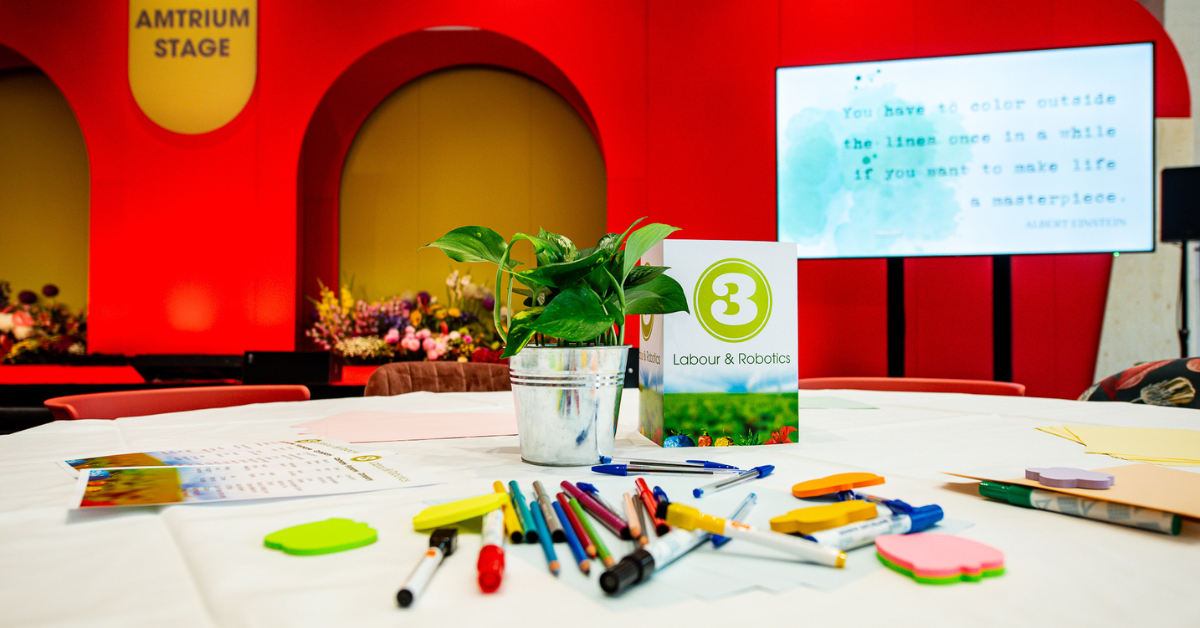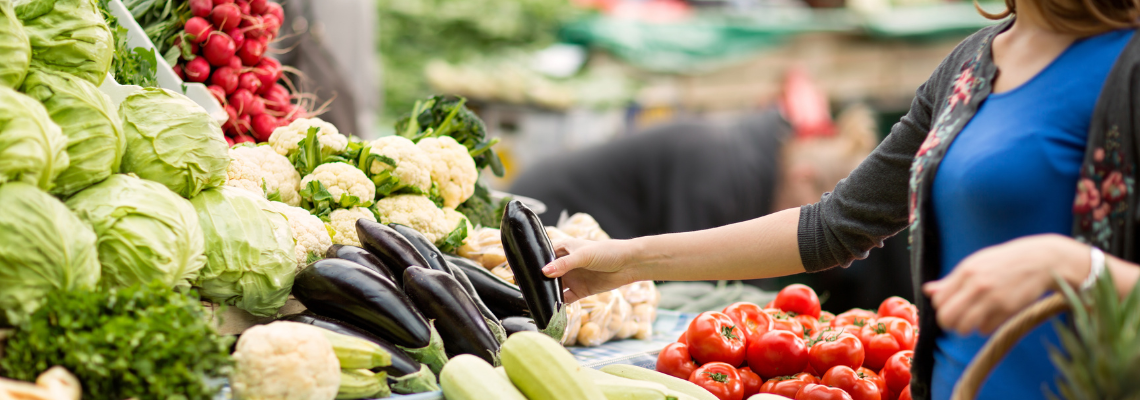On 13, 14 and 15 June, GreenTech Amsterdam will again be the center of international horticulture. With more than 525 stands, the event is experiencing significant growth this year. Together with various companies and organizations, GreenTech also set up a broad knowledge program, which focuses on the most important trends and developments within the sector. We will already highlight three sessions.
TUESDAY 13 JUNE:
NUTRITIONAL REQUIREMENTS FOR HEALTHY PLANTS
What is a healthy plant exactly, how does this work inside a plant and why are we having more and more issues with pests and/or diseases? Crop consultant Mark van der Werf got more and more interested in these questions over the last 10 years. He started working with biostimulants in combination with good climate control. “Sometimes we had good results but also often the results were disappointing. Quickly I realized that our current nutritional approach is blocking the way to healthy plants. We had to do things differently. If we don’t change nutrition and the way we apply our minerals, creating healthy plants is never going to happen. At that moment I started the company Power2Plants where we focus on three things: advice, products, and data.”
How many minerals?
During the GreenTech session ‘Nutritional requirements for healthy plants’ Van der Werf will tell more about the focus of Power2Plants: “In our nutritional programs, we are dealing with over supplying potassium (and blocking the uptake of calcium and magnesium), over supplying nitrates (and phosphorous), lack of trace minerals an lack of microorganisms working together with the plant. Most growers are not aware of how many minerals (in kg/ha) their crops need on a weekly basis. We make a projection of this amount and compare this with the realized feed. We also use foliar sprays to bring trace elements in the right form to the plant. The presence of each element is measured (bi)weekly with plant sap analyses. The analyses tell us directly what minerals in what quantity are available in the plant. We don’t want an over- or undersupply of certain minerals.”
Cut back on inputs
At the moment this approach is used in soft fruits, some ornamental crops and trialling in tomatoes, says Van der Werf. “Results look quite promising with a better-performing plant. In strawberries, we see that we can control mildew on the leaves and we also see a slow-down in the population build-up of some pests. But we still have a lot to learn, and a lot of progress can be made.” Van der Werf believes this topic is important for growers. “We have to cut back on our inputs, such as water and fertilizers and we can’t only rely on chemical products to protect our plants. The fact that pests and/or diseases are attacking our plants is because we are growing weak plants. And also, we have to grow more nutritional-dense (healthier) food. If plants are healthier (less susceptible to pests and diseases) they also produce higher quality food.” The described approach is quite different from the current way of growing, says Van der Werf. “This means growers (and consultants) have to step out of their comfort zone. It demands different knowledge, thinking and sometimes forgetting everything you have learned in the past (the green fingers). We are used to work working reactive reactively (if something happens, we act). We have to be much more proactive.”
TUESDAY 13 JUNE:
TRANSITION PATHWAYS TOWARDS CIRCULAR MATERIAL STREAMS FOCUSING ON NUTRIENTS AND SUBSTRATES
Alexander van Tuyll has been working at Wageningen University & Research (WUR) Greenhouse Horticulture for almost two years as a researcher on circular greenhouse horticulture. Since 2019, this theme has been an important part of the research that is being done. “These studies concern various material flows – mainly water, nutrients, CO2, substrate, plastics, and biomass – and how greenhouse horticulture can deal with this in a circular manner. It is important that we look beyond the greenhouse itself: although we are efficient with these materials at company level, where should these materials come from and what happens to them after they leave the company? And what is the influence of this on greenhouse horticulture companies themselves?”
Better understand sustainability
In the GreenTech session 'Transition Pathways Towards Circular Material Streams Focusing on Nutrients and Substrates', Van Tuyll focuses on fertilizers and substrate, essential inputs that face many challenges to be produced renewably. “They are of course also related to each other. This session brings together parties from the substrate and fertilizer world to discuss what the future will be in a circular economy and how we can move in that direction.” Van Tuyll wants to draw attention to the opportunities and challenges of a relatively new perspective on sustainability for greenhouse horticulture. “Efficiency, energy, and reduction of emissions have been receiving attention for some time. These are important, but not enough for total sustainability. We hope that from our conversation the audience will better understand what circularity means and what considerations are made by the sector with the examples of fertilizers and substrate.”
Adjust cultivation
A major advantage of circular raw materials is that they reduce dependence on natural reserves, which are spread all over the world and can be sensitive to disturbances. “It does affect cultivation. If growers start cultivating with other types of substrate and fertilizers, cultivation will have to be adjusted accordingly in order to maintain an equal yield and also without emissions. The transition will be gradual, but with some materials, it is already going fast. For example, the British government wants a total ban on peat in a few years. This is a challenge for both growers and the supply industry, and collaboration will also be necessary to find solutions.”

WEDNESDAY 14 JUNE:
FOSSIL FREE CULTIVATION – THE ROAD TO A ZERO FOOTPRINT GREENHOUSE WITH HYDROGEN
Since 2013, Jörg Gigler has been director of TKI New Gas, part of the Top Sector Energy. The TKI – top consortium for knowledge and innovation – is a public-private partnership. “In that capacity, I support innovators in the field of energy transition. Specifically, I focus on themes related to making the molecules in our energy system more sustainable, such as hydrogen and green gas.” Gigler is involved in the GreenTech session 'Fossil Free cultivation - the road to a zero-footprint greenhouse with hydrogen'. The focus is on the way in which the greenhouse horticulture sector can make the transition to 'climate neutral' and what role hydrogen can play in this. “Hydrogen is on the rise worldwide and that rightly raises the question of what role the greenhouse horticulture sector can play,” says Gigler. “The possibilities for making the sector completely sustainable are limited. That is why it is important to seriously discuss all options, including hydrogen. Through careful analysis and consideration, it is possible to determine the value for the sector and act accordingly.”
Systemic role of hydrogen
According to Gigler, hydrogen can be used to produce the necessary electricity and heat in a climate-neutral manner. “I have been involved in the development of hydrogen for years. A few years ago, we made the step from zero-emission mobility (no emissions except water vapour) to the systemic role that hydrogen can play in the energy transition. This means that hydrogen can ensure that more electricity from the sun and wind can be integrated into the energy system, and that additional opportunities arise for the transport and storage of sustainable energy in the form of hydrogen. In addition, hydrogen can help so-called sectors that are difficult to make sustainable, such as industry, offer promising solutions. There is a great deal of interest in this worldwide and you can see that in the countries that are looking to the Netherlands for this development. As an example: in mid-May, there were more than 10,000 visitors in Rotterdam to talk about hydrogen for three days. A beautiful perspective!”
Check more information about these and other sessions at www.greentech.nl


.png?h=628&iar=0&w=1200)







